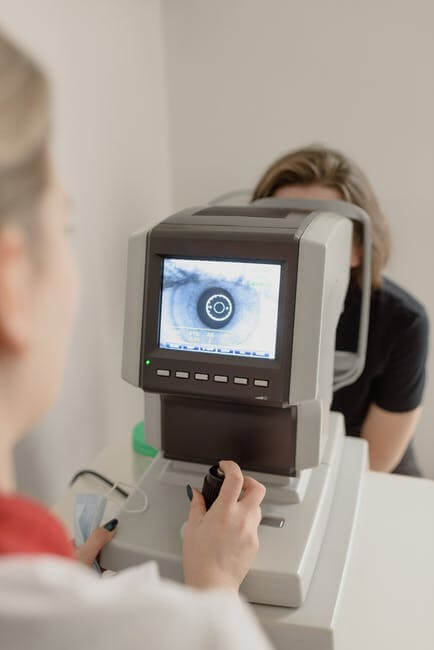Posted by: Kentucky Eye Institute in General Eye Health

This year marks the 25th anniversary of the introduction of LASIK surgery in the United States. Today, around 6,000 ophthalmic surgeons perform the corrective eye procedure, according to the National Institutes of Health.
If you are looking for a Lexington eye care professional or a Versailles eye clinic that performs this and other refractive surgery options, you can trust our experienced Versailles optometrist to explain the benefits of refractive eye surgery.
LASIK is a popular form of refractive surgery, but it is not the only one. Our optometrist Lexington KY and our eye doctor Lexington KY can perform several refractive surgery options, which we’ll explore below.
Your Lexington Eye Care Surgery Options
Are you wondering, “What is refractive surgery?” The surgery corrects vision problems that result from refractive errors.
Those types of vision problems result from the eye’s inability to focus light onto the retina. The retina is the light-sensitive area at the back of the eye. When the retina does not receive focused light, the resulting image can lead to blurry vision.
What Types of Refractive Errors Can My Versailles Optometrist Correct?
There are four types of refractive errors. Depending on the severity of the vision problems, patients may require surgery to correct any of the following.
Nearsightedness (myopia) causes objects and images in the distance to appear blurred. Nearby objects remain clear. This is often because the cornea is too curved.
Farsightedness (hyperopia) causes nearby objects to become blurry while distant objects remain in focus. This condition often results from the cornea being too flat.
Astigmatism causes objects at any distance to appear blurry. This results from defects in the lens, cornea, or both.
Presbyopia typically results from aging. Surgery is not always an option for this age-related problem. One of our eye specialists can prescribe reading lenses or another form of eyewear to address this vision problem.
Your Versailles Eye Clinic Surgical Options
Depending on the cause of your refractive error, one of our doctors may recommend one of several surgical procedures to correct your vision. All of our surgical procedures are safe and provide long-term results.
LASIK
LASIK (laser in-situ keratomileusis) is a procedure that reshapes the cornea. Our surgeon will begin by creating a flap on the outer layer of the cornea. Then, our surgeon will use a special laser to reshape the tissue underneath.
Computer imaging can be used to guide the procedure. The procedure requires minimal recovery time and the results can be enjoyed immediately.
PRK
For cases of mild refractive errors, photorefractive keratectomy can be used to reshape the cornea. Unlike LASIK, the laser treats the outer layer of the cornea. Computer imaging can also be used to perform this eye surgery.
RLE
Refractive lens exchange is the same as refractive cataract surgery. After our doctor makes a small incision at the edge of the cornea, the lens is removed. The doctor then places a lens implant.
This procedure is used to correct extreme vision problems.
PRELEX
Presbyopic lens exchange treats presbyopia. One of our expert surgeons begins by removing the lens and replacing it with a multifocal lens. A multifocal implant helps our patients see far and near.
Intacs
Intacs (intracorneal ring segments) require that our doctor make a small incision in the cornea. He or she then places two plastic rings at the outer edge. The ring helps to flatten the cornea.
Laser surgery has largely replaced the need for this procedure.
Phakic Intraocular Lens Implants
Also known as implantable contact lenses, this procedure works for people who are too nearsighted for LASIK. One of our surgeons makes a small incision at the edge of the cornea.
Then, he or she attaches the implant lens to the iris or behind the pupil. Your natural lens stays in place.
LRI
This surgery, also known as astigmatic keratotomy doesn’t use lasers. The doctor performs this surgery to correct astigmatism. First, he or she makes one or two small incisions in the cornea before working to make the cornea more rounded.
This procedure can be performed alongside laser eye surgery.
ALK
Automated lamellar keratoplasty treats hyperopia and myopia. The eye surgeon starts by making a flap in front of the cornea. Then, the flap is folded and a thin slice of tissue is removed.
This flattens the central cornea. There is typically no need for stitches.
To treat hyperopia, the eye surgeon uses special incisions to create a bulge in the eye that corrects hyperopia.
Which Treatment Is Right for Me?
The first step toward better vision begins with a comprehensive exam at our office. Eye surgery is not always the only remedy for correcting vision, but many of our patients can enjoy long-term benefits following LASIK or another treatment that addresses refractive errors.
During your eye exam or consultation, one of our doctors will explain your treatment options in length.
Contact Your Eye Doctor Lexington KY Today
Correcting refractive errors requires expert care. If you are looking online for “optometrist Lexington KY” or “Versailles eye clinic,” look no further.
The optometrists at our Lexington eye care center work with a supporting staff of around 50 employees. Each Versailles optometrist takes pride in providing compassionate care for our patients.
Beyond correcting refractive errors using laser treatments, our office can treat cataracts. We also provide a wide range of retina treatments and glaucoma services. To schedule your examination with our eye doctor Lexington KY, contact our office today.
